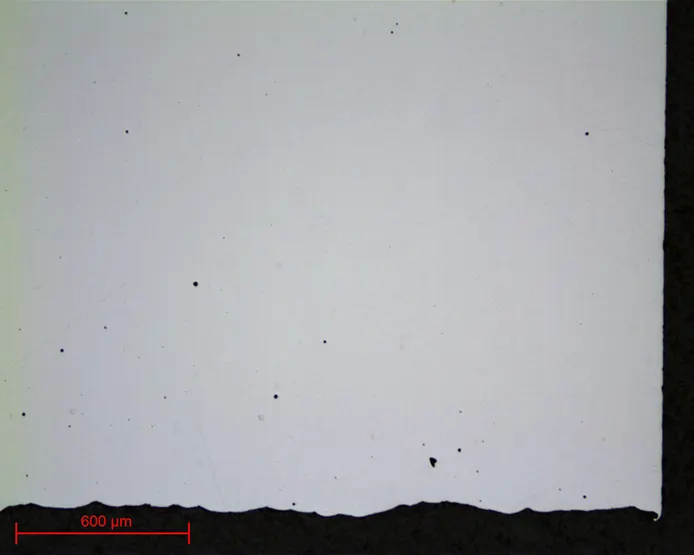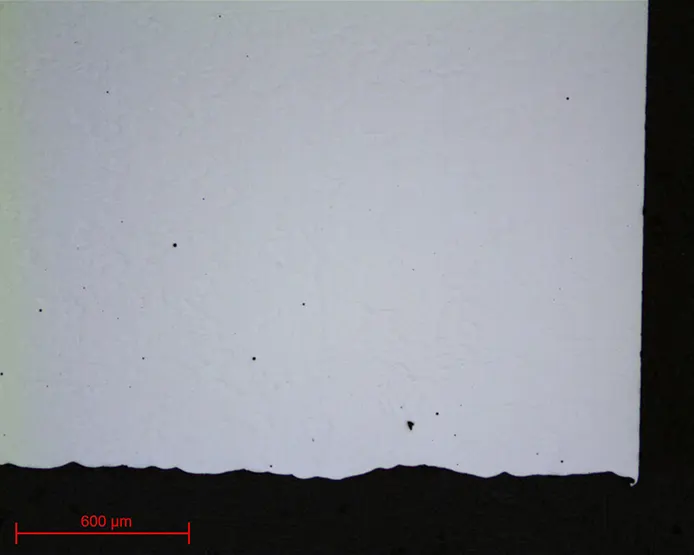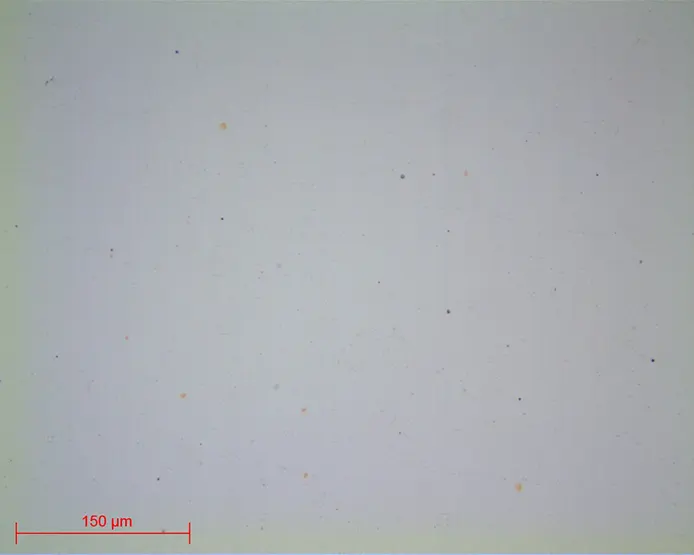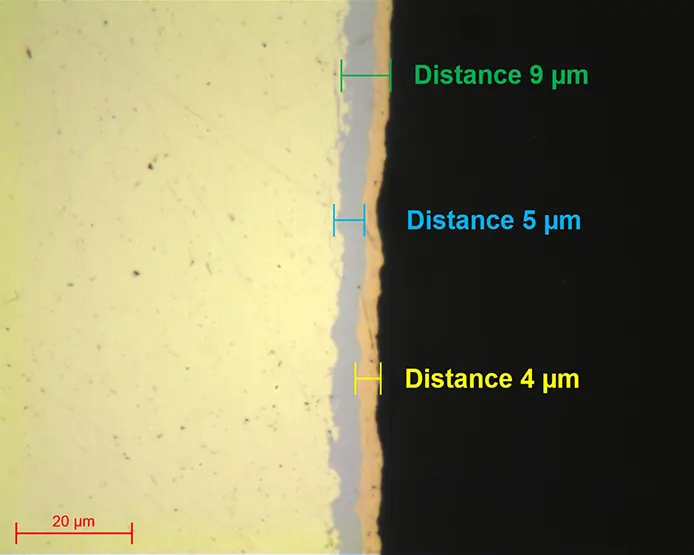NICKEL
CONTROL QUALITY
INTRODUCTION
Among them are iron, copper, cobalt, magnesium, sulphur, arsenic, etc.
Three types of ore can be distinguished: arsenic ores, sulphide ores and oxidised ores. Generally, arsenic and sulphide ores are extracted from underground, and sometimes very deep (2000m), mines, while oxidised ores are always extracted from open-pit mines since they are formed on the surface.
Symbol: Ni
Atomic N°: 28
Density: 8,9
Molar mass: 58,7 g.mol-1
Melting point: 1440 °C
PROCESSING
The process can be summarised as follows:
- The first stage is concentration, which involves a succession of partial firings followed by reductive melting: this involves high temperatures in an oxidising atmosphere, the aim of which is to enrich the raw material with nickel by eliminating impurities as much as possible.
The material obtained is called: “speiss” if the nickel is combined with arsenic (mixture of nickel, cobalt and arsenic) and “matte” if it is combined with sulphur (mixture of nickel, copper and sulphur). A final firing transforms the materials obtained into oxides. - The second stage is the treatment of the oxidised ores, which generally involves reducing the oxides combined with the metal or directly reducing the metallic nickel.
Due to the multitude of oxides present, several processes can be carried out involving either different heat treatments or different chemical solutions, with the aim of reducing specific oxides.
PROPERTIES AND USES
It is very rarely used pure. Nickel is mainly used as an alloying or additive element:
- Stainless steels, addition of nickel to improve corrosion resistance,
- Invar/Kovar, an iron, nickel (and chromium for Kovar) alloy with a very low thermal expansion coefficient, used in watchmaking, topography, measuring devices, etc.
- Cunife and Fernico, an alloy of copper, nickel and iron with the same thermal expansion coefficient as some types of glass.
- Phynox, an austenitic superalloy of cobalt, chromium, nickel, iron and molybdenum used for its very high corrosion resistance,
- Nickel silver, an alloy of copper, nickel and zinc, used for its low oxidation and silvery appearance, in jewellery, musical instruments, precision instruments, watches, etc.
- AlNiCo, an alloy of aluminum, nickel and cobalt used for its ferromagnetic characteristics allowing the manufacture of permanent magnets (AlNiCo magnet),,
- Gold-nickel alloys used in jewellery for their colours and superior mechanical properties, etc.
However, its main unalloyed use is as a coating. Nickel is stainless in the ambient air and associated with its bright and aesthetic appearance, it is used for protection against corrosion, improvement of mechanical properties (resistance to wear, abrasion, friction) and/or to improve appearance.
These coating operations are called “nickel plating”. There are two types: electrolytic nickel plating and chemical nickel plating.
Nickel also benefits from its own alloys (%Ni > 50%), they are practically all used for their corrosion/ oxidation resistance and creep resistance, among them:
• Copper-nickel alloys (Monel), which are more mechanically resistant than non-alloyed nickel and are very resistant to corrosion in chemical environments. They are heat treatable and with the addition of aluminum and titanium, the alloys retain their corrosion resistance and have enhanced mechanical characteristics. Therefore, they are used in the marine industry, oil and gas industry, in the transport of steam and water (fresh and sea water), in chains, cables, etc.
Example of grade: Ni-Cu35 (Monel or Alloy 400); Ni-Cu35AlTi (Monel or Alloy K-500).
• Nickel-chromium alloys, which have high resistivity, very good oxidation resistance and good mechanical strength at high temperatures. Thanks to these characteristics, they are often used for electric heating resistors (electric ovens, toasters, dryers, etc.). Iron can be added to nickel-chromium alloys to increase creep resistance.
Example of grade: Ni-Cr20 (Chromel A); NiCr14Fe6 (Inconel 600).
• Nickel-based superalloys are high-performance alloys, which initially designate alloys developed for turbojet engine parts (aeronautics industry). Today they are also used in the power generation industry, the oil industry, the automobile industry, the chemical industry, the nuclear industry, etc. Their main benefit lies in their excellent mechanical resistance at high temperatures (creep resistance, oxidation/corrosion, ductility, fatigue, etc.). Some alloys also have cryogenic properties. Nickel-based superalloys have a nickel content of more than 50%. A multitude of additive elements can be added and heat treatments can be carried out with the aim of influencing mechanical properties by modifying the microstructure of the alloys.
Example of grade: Inconel (625 or 718); Hastelloy; Nimonic; Rene Alloy.
• Other nickel alloys, such as:
Nickel-titanium alloys (Ni-Ti) called “Nitinol” which benefit from shape memory and super-elasticity properties allowing them to withstand severe deformations but which can recover their initial shape. They are used in the aerospace sector (coupling sleeves, Frangibolt devices, solar panels), the biomedical sector (instrumentation, stents, etc.) and the commercial sector (clothing and sports equipment, etc.).
Permalloy alloys which are nickel and iron based alloys used for their magnetic properties. These include: their high magnetic permeability and magnetoresistance as well as their low coercive field and magnetostriction.
Alumel alloys, consisting of 95% nickel (with manganese, aluminum and silicon), are used to make thermocouples.
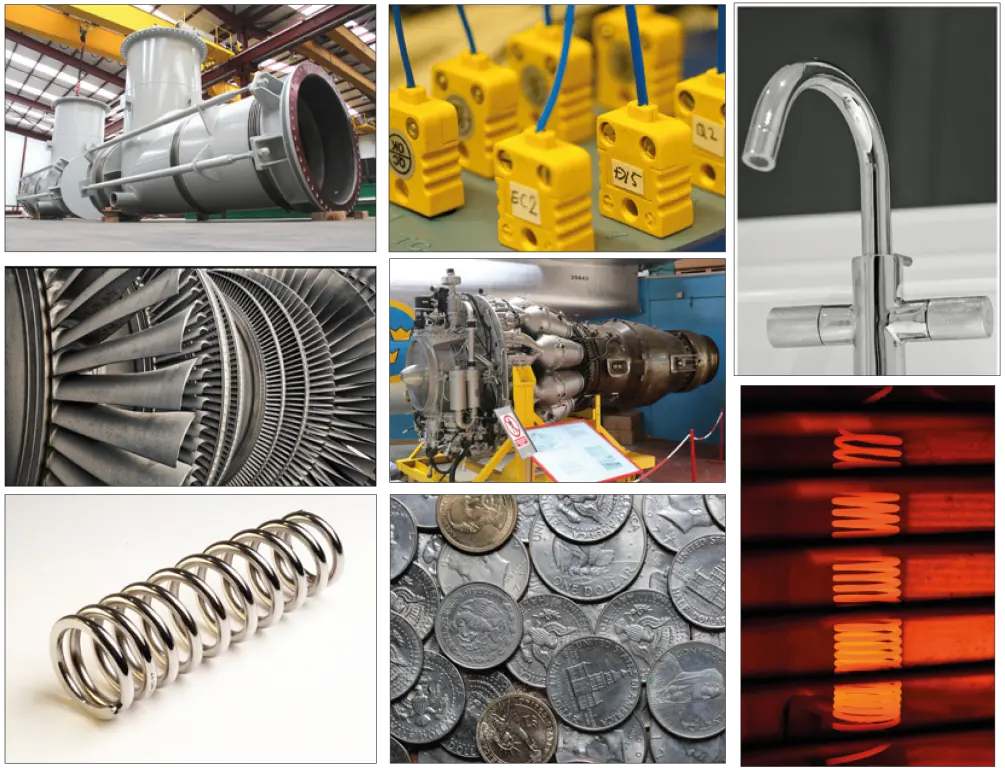
METALLOGRAPHIC PREPARATION
Obtaining an inspection surface requires a succession of operations, each as important as the next, regardless of the material.
These steps are in the following order:
• Standardisation of the geometry of the sample taken (if necessary), called «MOUNTING».
• Improvement of the surface condition of this sample, called «POLISHING».
• Characterisation of the sample: revealing the microstructure of the sample by an etching reagent (if necessary) called «METALLOGRAPHIC ETCHING» and microscopic observation (optical or electronic).
=> Each of these steps must be carried out rigorously, otherwise the following steps will not be possible.

CUTTING
In other words, it is essential to avoid heating or any deformation of the metal that could lead to degradation of the material. Cutting is a fundamental step which conditions the further preparation and inspection of parts.
PRESI’s wide range of medium and large capacity cutting and micro-cutting machines can be adapted to any need with regard to cutting precision, sizing or quantity of products to be cut:
CONSUMABLES
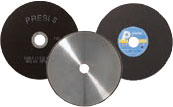 |
NICKEL AND ALLOYS |
| Micro-cutting | UTW S Ø180 mm MNF AO |
| Medium-capacity cutting | MNF AO S |
| High-capacity cutting | MNF AO S |
Table1: Choosing the right cut-off wheel type

MOUNTING
Achieving good-quality mounting is essential to protect fragile materials and also to achieve good preparation results for polishing and future analysis.
Before mounting, the specimen should be deburred with coarse abrasive paper, for example, to remove any cutting burrs. Cleaning with ethanol (in an ultrasonic tank for even greater efficiency) is also possible. This allows the resin to adhere as well as possible to the sample and thus limits shrinkage (space between the resin and the sample).
If shrinkage persists, it can lead to problems during polishing. Abrasive grains may become lodged in this space and then be released at a later stage, thus creating a risk of pollution for the sample and the polishing surface. In this case, cleaning with an ultrasonic cleaner between each step is recommended.
There are two mounting options:
HOT MOUNTING
• Fully automatic hot-mounting press.
• Easy to use: memorisation, adjustment of processes and speed of execution make it a high-precision machine.
• The hot-mounting machine has 6 different mould diameters from 25.4-50mm.
+ POINT
COLD MOUNTING
• If the parts to be examined are fragile/sensitive to pressure
• If they have a complex geometry such as a honeycomb structure
• If a large number of parts are to be mounted in series.
The cold process can be used with:
+ POINT
+ POINT
CONSUMABLES
 |
NICKEL AND ALLOYS |
| Hot process | Hot epoxy Phenolic Allylic |
| Cold process | KM-U KM-B IP – IP FAST 2S* |
Table 2: Choosing the right mounting resin type
* Suitable for very large series

POLISHING
PRESI offers a wide range of manual and automatic polishing machines, with a wide choice of accessories, to cover all needs, from pre-polishing to super-finishing and polishing of single or series samples.
The MECATECH range of automatic polishers allows both manual and automatic polishing. With its advanced technologies, motor power from 750-1500W, all the PRESI experience is concentrated in this very complete range. Whatever the sample number or size, MECATECH guarantees optimal polishing.
CONSUMABLES AND POLISHING RANGE
All the first steps of each range are called “levelling” and consist of removing material quickly to level the surface of the sample (and resin). Those given below are standard and can therefore be modified as required.
Applied pressures vary according to sample size, but in general the following applies: 1daN per 10mm mounting diameter for the pre-polishing steps (ex: Ø40mm = 4 daN) then reduce force by 0.5daN at each polishing step with an abrasive suspension.
RANGE N°1
| N° | Support | Suspension / Lubricant | Platen Speed (RPM) |
Head Speed (RPM) |
Rotation direction platen / head |
Time |
| 1 | SiC P320 | Ø / Water | 300 | 150 | 1’ | |
| 2 | TOP | 9μm LDP / Reflex Lub | 150 | 135 | 4’ | |
| 3 | RAM | 3μm LDP / Reflex Lub | 150 | 135 | 2’ | |
| 4 | NT | 1μm LDP / Reflex Lub | 150 | 135 | 1’ | |
| 5 | SUPRA | SPM / Water | 150 | 100 | 1’ |
The polishing range above is complete and is not necessarily to be carried out entirely according to the metallographic examinations to be carried out.
If nickel is not the main element of the material to be polished, it is necessary to adapt the polishing range according to the properties of the same material.
After this preparation, the polished specimens can be directly observed without metallographic etching.
Metallographic etching of nickel and its alloys is commonly performed using ADLER reagent. The etching creates differences in relief and/or colour between the different constituents, allowing them to be observed.

MICROSCOPY
Micrographs 8 and 9: Polished nickel base screws up to 1μm lens x5 and lens x20
Micrographs 10 and 11: Polished superalloy up to SPM lens x20 and lens x50
Micrographs 12 and 13: Polished superalloy up to SPM lens x20 and lens x100
DOWNLOAD THE LAB'NOTE
Simply fill out the form below:
Discover our other Lab’Note:
- 3D printing quality control
- Hardened heat treatment control
- Medical device quality control
- Steel quality control
- Stainless steel quality control
- Cast iron quality control
- Copper alloy quality control
- Aluminum quality control
- Nickel quality control
- Titanium quality control
- Ceramic materials quality control
- Electronics quality control
- Precious metal quality control









